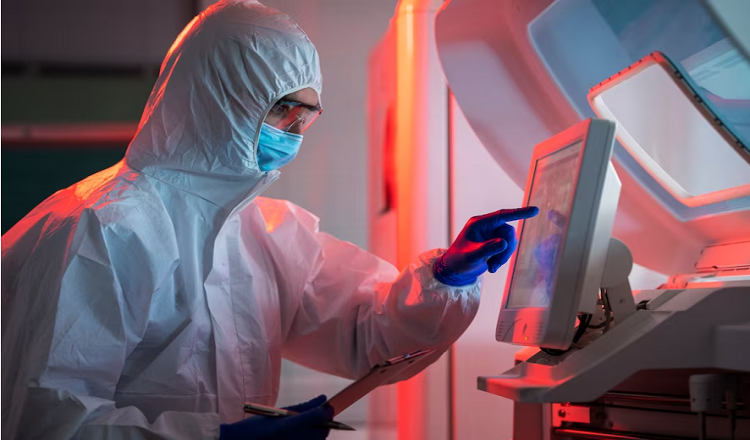Reforming Medical Education How to Train the Next Generation of Healthcare Professionals
The subject of medical education in the US has been a contentious one for a long time. The traditional model of medical education, which emphasises rote memorization and lecture-based learning, is being put to greater test by the evolving demands of the healthcare sector and of patients. To better prepare the upcoming generation of healthcare workers, there is significant interest in changing medical education in the US.
But why is this matter so crucial? Simply said, the standard of healthcare outcomes is directly influenced by the standard of medical education. Patient outcomes will deteriorate if healthcare workers are not appropriately trained to diagnose and treat patients. Additionally, the landscape of healthcare is changing quickly as a result of technological and innovative breakthroughs, and medical education must stay up with this transformation.
The current status of medical education in the US, the need for reform, and creative methods for educating the future generation of healthcare professionals will all be covered in this article. We will also go over the importance of regulation and accreditation in the reform of medical education, as well as the difficulties and barriers that must be surmounted in order to make real progress. In the end, we contend that enhancing medical outcomes and preserving the ongoing effectiveness of our healthcare system depend on revamping medical education in the US. So let’s get started and investigate how we might educate the US’s future healthcare workforce.
The State of Medical Education Currently in the US
The majority of the present medical education paradigm in the US is based on a conventional, lecture-based methodology. In the first two years of medical school, students learn the fundamental sciences, and in the following two years, they rotate through clinical rotations. Although this approach has been in use for a while, it has received criticism for its flaws. Its insufficient preparation of students for the reality of contemporary healthcare practise, which increasingly emphasises team-based care and technologically enabled solutions, is one of its primary weaknesses.
Additionally, a major obstacle to admittance for many students is the expensive nature of medical education and the enormous debt that many students accrue. The average amount of debt owed by graduating medical students in 2020, as reported by the Association of American Medical Colleges, was $241,600. Many have called for a redesign of the US medical school system in light of these difficulties and the evolving requirements of the healthcare sector.
Reform Is Needed
The US medical education system as it now is insufficient to address the evolving needs of both patients and the healthcare sector. The conventional method has its advantages, but it is increasingly clear that students are not sufficiently prepared for the reality of contemporary healthcare practise. With an increasing emphasis on team-based treatment, patient-centered care, and preventative health, the healthcare sector is fast developing.
Innovation and technological developments are also changing the way healthcare is delivered and opening up new possibilities for patient outcomes improvement. To guarantee that medical practitioners have the abilities and information required to deliver high-quality treatment in a fast changing healthcare environment, medical education must adapt to these changing needs. To close the gap between conventional medical education and the demands of contemporary healthcare practise, reform is required.
Innovative Medical Education Methods
Innovative medical education models are emerging as the need for reform in this field grows more pressing. One of the most promising strategies for changing medical education in the US is competency-based education. Other potential strategies include team-based learning and technology-enabled education. Instead than depending on conventional assessments like grades and tests, competency-based education focuses on developing specific skills and competencies.
The focus of team-based learning is on cooperation and teamwork, with students engaging in active problem-solving while studying in small groups. Technology is used to improve learning and results in technology-enabled education. The successful use of these models in other nations and institutions has demonstrated that they can result in better outcomes, higher student involvement, and improved collaboration among healthcare professionals, even though each strategy has its advantages and disadvantages.
Regulation, Accreditation in Medical School Reform
In order to guarantee high-quality medical education in the US, accreditation and regulation are essential. Standards and guidelines for medical education programmes are established by accreditation organisations like the Liaison Committee on Medical Education (LCME) and the Accreditation Council for Graduate Medical Education (ACGME), and regulatory organisations like state medical boards guarantee that healthcare professionals are duly licenced and certified.
There are potential for reform to better align these systems with the requirements of contemporary healthcare practise, however the current certification and regulatory processes struggle to keep up with the quickly evolving healthcare sector. Successful methods of regulation and accreditation from other nations and institutions, such as the Australian Medical Council’s approach to accreditation and the European Qualifications Framework for lifelong learning, might offer important insights into future improvements in the US.
Obstacles and Challenges in Reforming Medical Education
Despite the critical necessity for reforming medical education in the US, there are several difficulties that must be overcome. The political and economic environment is a significant obstacle since it can foster resistance to change and restrict funding for creative programmes. Reform initiatives may also be hampered by cultural issues, such as the custom of lecture-based education.
Student debt and the exorbitant cost of medical education may also deter students from pursuing jobs in healthcare. Stakeholders must collaborate to increase support for reform and research new funding mechanisms in order to overcome these obstacles. Building momentum for change can also be accomplished by highlighting the advantages of novel approaches to medical education, such as better patient outcomes and enhanced job satisfaction for healthcare professionals.
Conclusion
Reforming medical education is essential for raising healthcare quality in the US. Innovative approaches to medical education, like competency-based education, team-based learning, and technology-enabled education, provide viable alternatives because the existing model of medical education does not effectively educate students for the realities of contemporary healthcare practise. The exorbitant cost of medical education, cultural barriers, and political and economic resistance are only a few of the substantial difficulties and impediments that reform initiatives must overcome.
In order to overcome these obstacles, stakeholders must collaborate to increase support for reform, look into new funding options, and highlight the advantages of cutting-edge medical education strategies. It is the responsibility of educators, lawmakers, and healthcare professionals to promote and carry out reform initiatives. Together, we can make sure that the upcoming generation of medical professionals has the abilities and information required to deliver high-quality, patient-centered care in a fast changing healthcare environment. It is time to act and make medical education reform a top priority for the US healthcare system’s future.
Read More You May Like:














Post Comment